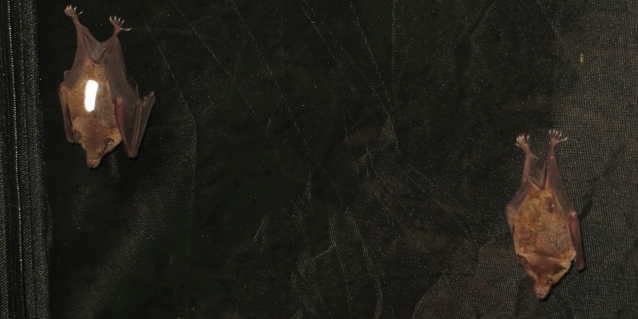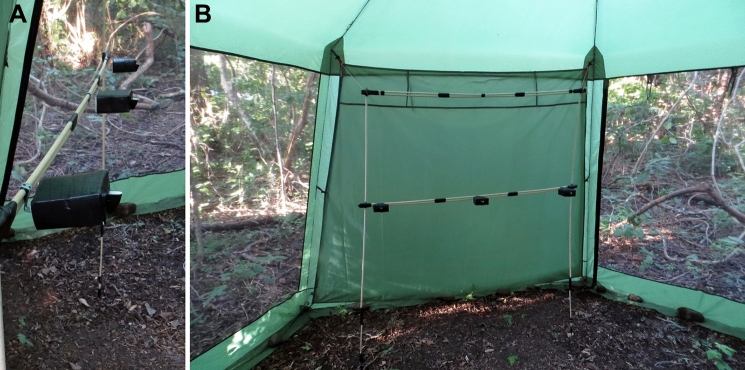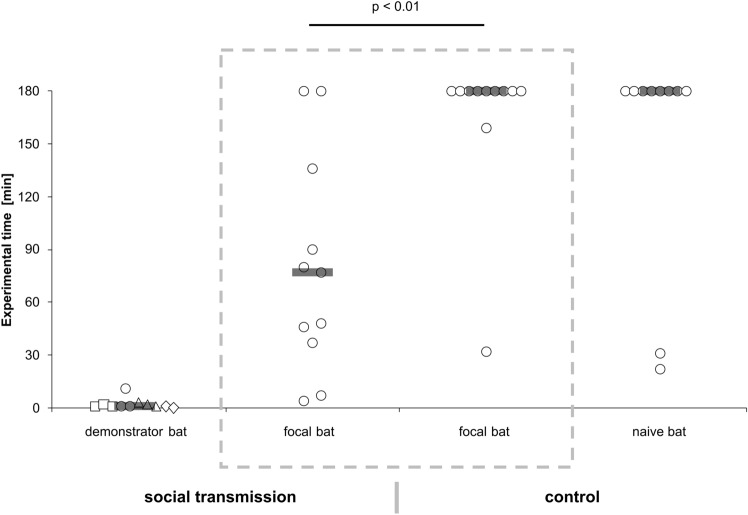Social information facilitates learning about novel food sources in adult flower-visiting bats
Abstract
Incorporating novel food sources into their diet is crucial for animals in changing environments. Although the utilization of novel food sources can be learned individually, learning socially from experienced conspecifics may facilitate this task and enable a transmission of foraging-related innovations across a population. In anthropogenically modified habitats, bats (Mammalia: Chiroptera) frequently adapt their feeding strategy to novel food sources, and corresponding social learning processes have been experimentally demonstrated in frugivorous and animalivorous species. However, comparable experiments are lacking for nectarivorous flower-visiting bats, even though their utilization of novel food sources in anthropogenically altered habitats is often observed and even discussed as the reason why bats are able to live in some areas. In the present study, we investigated whether adult flower-visiting bats may benefit from social information when learning about a novel food source. We conducted a demonstrator–observer dyad with wild Pallas’ long-tongued bats (Glossophaga soricina; Phyllostomidae: Glossophaginae) and hypothesized that naïve individuals would learn to exploit a novel food source faster when accompanied by an experienced demonstrator bat. Our results support this hypothesis and demonstrate flower-visiting bats to be capable of using social information to expand their dietary repertoire.




 求助内容:
求助内容: 应助结果提醒方式:
应助结果提醒方式:


